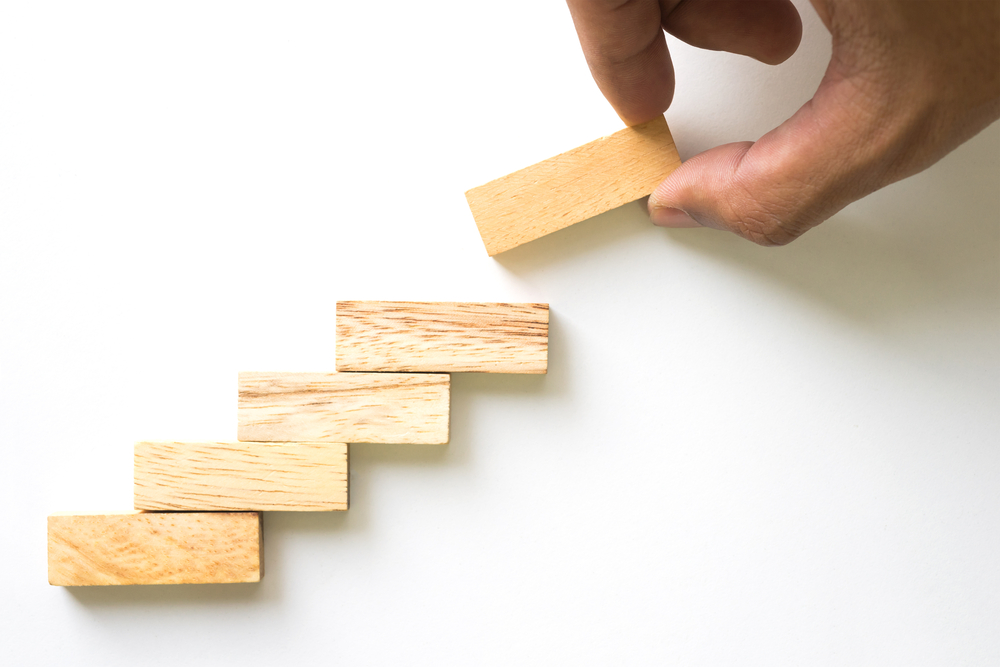A little over a year ago I wrote a piece for Thrive Global regarding my experience as a physician grappling with burnout [1]. I wrote it at a time when I was starting to recognize that the traits which had allowed me to be successful in my career as a surgeon also promoted habits which were detrimental to my physical, emotional, and spiritual health. In that summary, I described my march toward the precipice of burnout and the discoveries that helped me slowly walk away. A year later, I find myself again reflecting on where I am, what I’ve learned, and where I’d like to be.
I’m not ashamed to admit this journey feels like two steps forward, a step back, a step sideways, falling down, and a step forward again. But just because progress isn’t a straight line doesn’t mean we’re not moving forward. Besides, there are just two choices when you realize you’re not on the path you want — give up or keep trying. Sometimes I have to give myself those choices out loud, but the answer is always the same. No matter how hard the alternative, giving up doesn’t feel like the right answer.
I find it interesting how habits can be so different from person to person. It’s easy to look at others and wonder why they can’t create the change they want in their lives, but when I look at my own habits, I realize just how hard that can be. Behaviors are often deep-seated, fueled by years of practice teaching the brain to reward actions that most efficiently provide pleasure and avoid pain. That’s an evolutionary force driven by our lower brains that is tough to counter.
Thrive was the first venue I heard about the concept of micro-steps as a mechanism of change. The concept is simple—“Change” with a capital C can feel overwhelming, but breaking down habits that are too small to fail at can allow progress on an incremental basis.
Setbacks seem less disheartening when the steps are small, and the rewards in success build on themselves, providing confidence to keep going. I’ve discovered countless micro-steps that have lead to measurable change in my life, but I’d like to share just a few of the most meaningful ones I’ve picked up in the last year.
Reflection time:
I wrote about “attention management” in my previous post (note: not “time management”—you can’t manage time, but you can manage where you place your attention). One of the foundations of good attention management is carving out time for daily and weekly reflection. Executive coach Jennifer Porter writes that “reflection gives the brain an opportunity to pause amidst the chaos, untangle and sort through observations and experiences, consider multiple possible interpretations, and create meaning. This meaning becomes learning, which can then inform future mindsets and actions.” [2].
There are lots of ways to do this. I tried getting up even earlier than my before-dawn wake-up time to allow space for journaling, but I found it was not only taking away some of my most restful sleep but also caused me too often to rush out the door and either not have enough time for my morning workout or show up late to my first appointment of the day. So, instead of listening to the news on my 10-minute morning commute to the gym (the wee hours are about the only time Los Angeles is spared of traffic), I started using my phone’s voice recorder for daily reflection time instead. I got this idea listening to Oprah Winfrey interview Eat Pray Love author Elizabeth Gilbert [3]. Gilbert lost her best friend turned partner, Rayya Elias, to cancer last year, but she still talks to her— “I can’t live without her…so I don’t.” When she wants to connect with Rayya, she turns on her phone’s voice recorder. “Something about the fact that it’s being recorded makes me feel like it’s being received.” I don’t have a close loved one that I reach out to, but her description of the practice resonated with me. I have no idea if I’ll ever go back and actually listen to these recorded journal entries, but it doesn’t matter. Memorializing my daily reflections affords me greater focus and purpose. I cherish my successes, consider my failures, mull over challenges, set my intentions for the day, and pray for those on my heart. It turns out researchers have demonstrated the quantifiable benefit of this practice. In Porter’s article, she cites a UK study demonstrating commuters prompted to use their travel for daily reflection were happier, more productive, and less burned out than those who didn’t [4].
Prayer:
I have a bit of a challenging history with organized religion, but as an adult and scientist I’ve become comfortable coming out as a believer in the power of prayer. Once I got over my hang-ups about some of the unpleasant historical expressions of certain religions, I came to appreciate the beauty of their values—humility, generosity, magnanimity, charity, honesty, humility, kindness, and love. Traditions around sacred holidays, celebrations, family gatherings, worship, and and the concept of Sabbath strike me as beautiful and enlightened. Growing up we prayed every night before dinner, which mortified me when guests were present or we were at a restaurant. Far from being embarrassed, I now recognize what a beautiful tradition we shared. Timing prayer every day with a meal creates a natural ritual, and what better time than before a meal to pause, reflect, take some deep breaths, and consider what we are grateful for? I’ve incorporated many of the patterns I grew up with, including closing my eyes, bowing my head and finding a place of quiet peace. I moved my gratitude journal from my bedside table to the kitchen and write down at least three things I’m grateful for when I’ve finished my prayer. This practice even helps me enjoy my meal’s nourishment more.
Stretching:
I’ve never found motivation for routine exercise challenging, but stretching is a different story. I spend large parts of my day in activities that tighten muscles in my back and legs, contributing to my natural inflexibility. To combat this, I take 3 minutes to do my highest yield stretches—touching my toes while pulling my face to my knees and sitting crosslegged. I do some extra stretches on running days as well. I notice a difference if I skip for just a few days, reinforcing the power of this micro-step in developing a healthy habit. Stretching every day has helped with my yoga practice, my running, my recovery from standing all day in the operating room, and my sleep. Just the act of doing something that is a little uncomfortable in the moment but pays off with significant rewards is a lesson in the value of discipline.

Breathing:
Deep breathing is another habit that doesn’t come naturally but one I’ve cultivated to employ throughout the day. Even outside of meditation, breathing is a way of slowing down and appreciating the moment. I like “box breathing”—a few seconds to inhale, hold, exhale, and hold again in a 1:1:1:1 ratio. I modify it a bit and breathe a little deeper from my diaphragm in the second phase instead of just holding. To create the habit, I do it right before my dinner prayer, after shutting off the lights to sleep, and while I’m stretching. Deep breathing then comes more readily when I really need it—like when someone cuts me off in traffic or when conflict arises at home or when things are going frustratingly slowly in the operating room. It’s remarkable how quickly a few deep breaths create calm and clarity. Finish with a smile and my mood instantly takes a little turn upward.
Love notes:
I’m usually the first one out of the house, so over the last few years I’ve taken to leaving a little note for my partner every morning by the coffee machine. The message is simple—something funny, a little encouragement, sometimes an apology, always an expression of love. My therapist taught me these actions make deposits in the “relationship bank,” filling up our reserves so we can better weather the difficult times. It’s another way for me to be grateful and gives Rick another reason to smile.
Whatever microsteps work for you, the important thing is to just try something. And then practice. I’ll admit that there are times when I just don’t feel like doing them, but because the steps are so small, it’s easier to motivate myself. Connecting them with ritual—in the car, before meals, at the end of a workout, before I leave the house—helps me remember to practice daily. Daily practice leads to positive habits, and the addition of multiple small positive habits lead to meaningful change.
________________________
- [1] Matthew Siedhoff. I Love Being a Doctor, But I Still Experience Burnout. Here’s How I Fight It. It took eight years for the stress of my career to take over. These are the tactics I use to fight back. September 24, 2018. https://community.thriveglobal.com/stories/i-love-my-job-but-i-still-experience-burnout-here-s-how-i-fight-it/
- [2] Jennifer Porter. Why You Should Make Time for Self-Reflection (Even If You Hate Doing It). March 21, 2017. https://hbr.org/2017/03/why-you-should-make-time-for-self-reflection-even-if-you-hate-doing-it
- [3] Elizabeth Gilbert. The Whole Human Experience. Oprah’s SuperSoul Conversations. June 9, 2019. https://www.iheart.com/podcast/649-oprahs-supersoul-conversat-28374905/episode/elizabeth-gilbert-the-whole-human-experience-45853370/
[4] Jachimowicz, Jon and Lee, Julia and Staats, Bradley R. and Menges, Jochen and Gino, Francesca, Between Home and Work: Commuting as an Opportunity for Role Transitions (July 2, 2019). Harvard Business School NOM Unit Working Paper No. 16-077; Columbia Business School Research Paper No. 16-7. Available at SSRN: https://ssrn.com/abstract=2714478 or http://dx.doi.org/10.2139/ssrn.2714478


